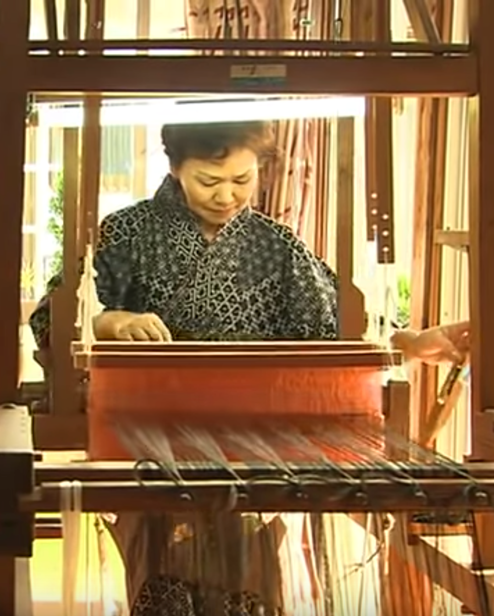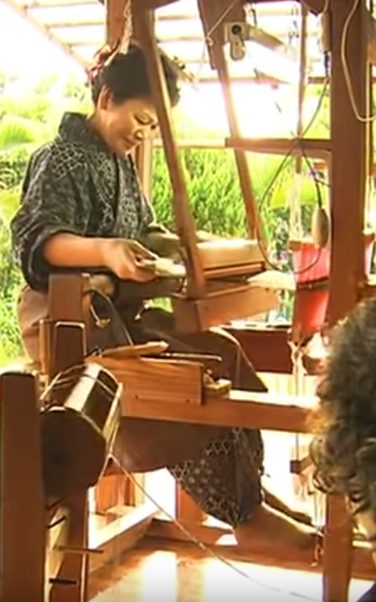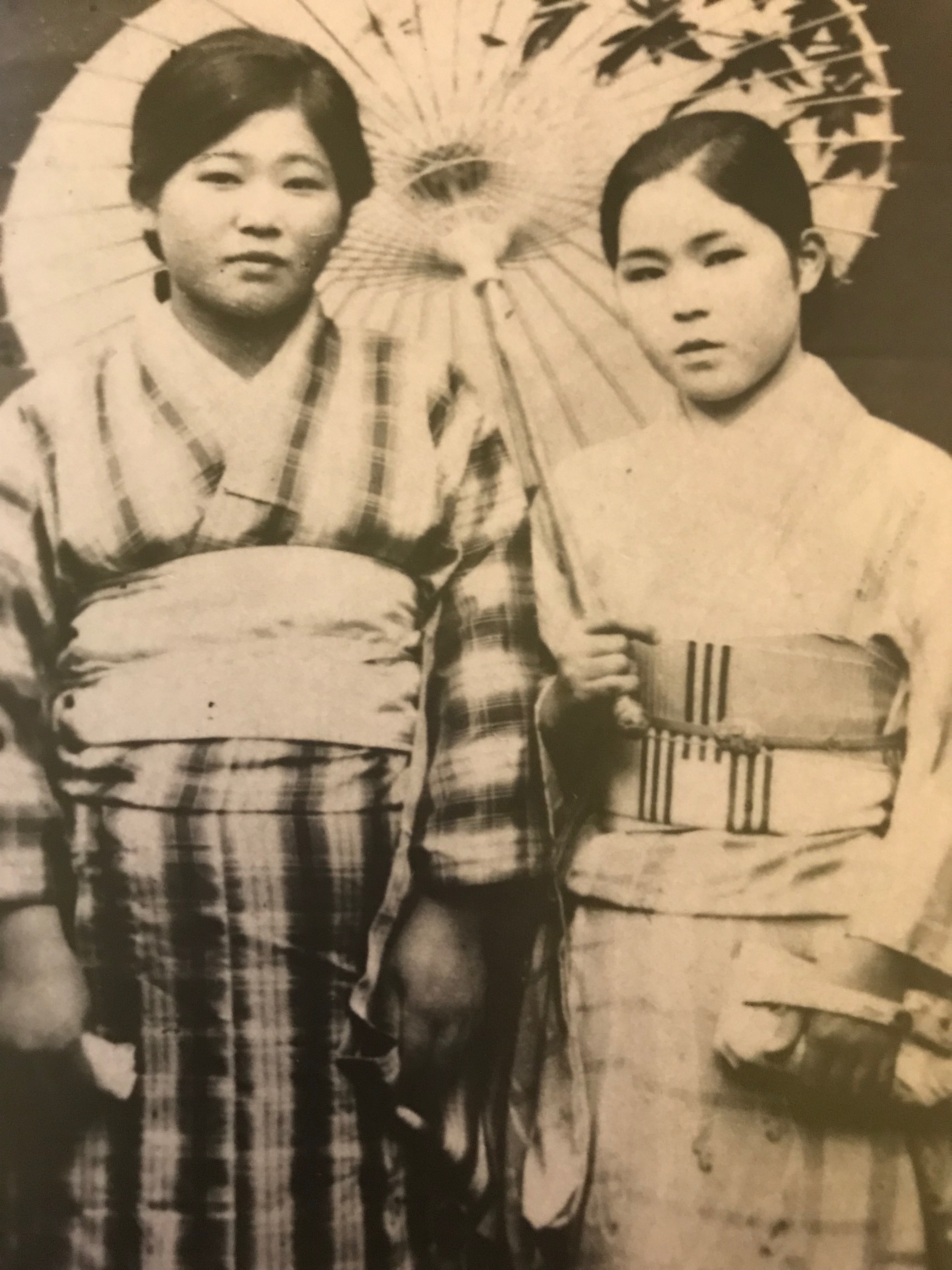Kimono, a traditional Japanese garment, literally means "thing to wear". Within the broad category there are many varieties developed over the centuries for different occasions and signifying the wearer's place in the world. The selection of fabrics, motifs, patterns, and embellishment techniques all denote special meanings and work together to create something that is both a wearable garment and a work of art. Traditionally the fabric is woven on hand looms with specific measurements so that the entire roll is used to make one kimono. Great care and special processes are involved in every step and it can take up to a year to complete one.
Kimono for special events are typically passed down over three generations. The kimono we've used in our collection are vintage garments between 30-50 years old. They are silk, and would've been made on looms like the one shown here.


Photos are stills from the documentary film Kimono by Susanne Brand and Nicola Graef. Link here: film Kimono
We have always admired the beauty and significance of Kimono. Vivian's family from Japan was descended from a long line of samurais and followed their traditional lifestyle. Her grandmother, (Obasan), wore kimonos daily. The type of kimono she wore depended on whether she was working around the house, visiting friends, or going to a special event. Whatever the activity, she wore her kimono with effortless elegance. Here she is on the right, holding a parasol.

We will use this blog to highlight different techniques of weaving, painting, and embellishing these amazing textiles.
Hopefully you'll find it as fascinating and inspiring as we do.
Here are some links with more information on the history of kimono.

